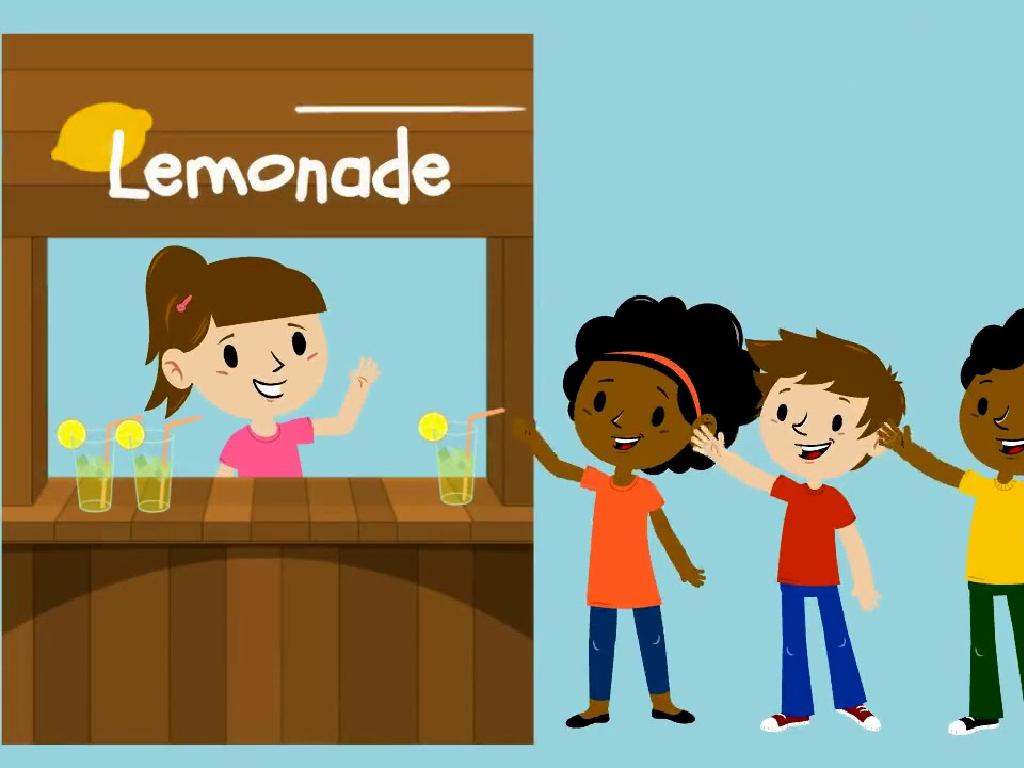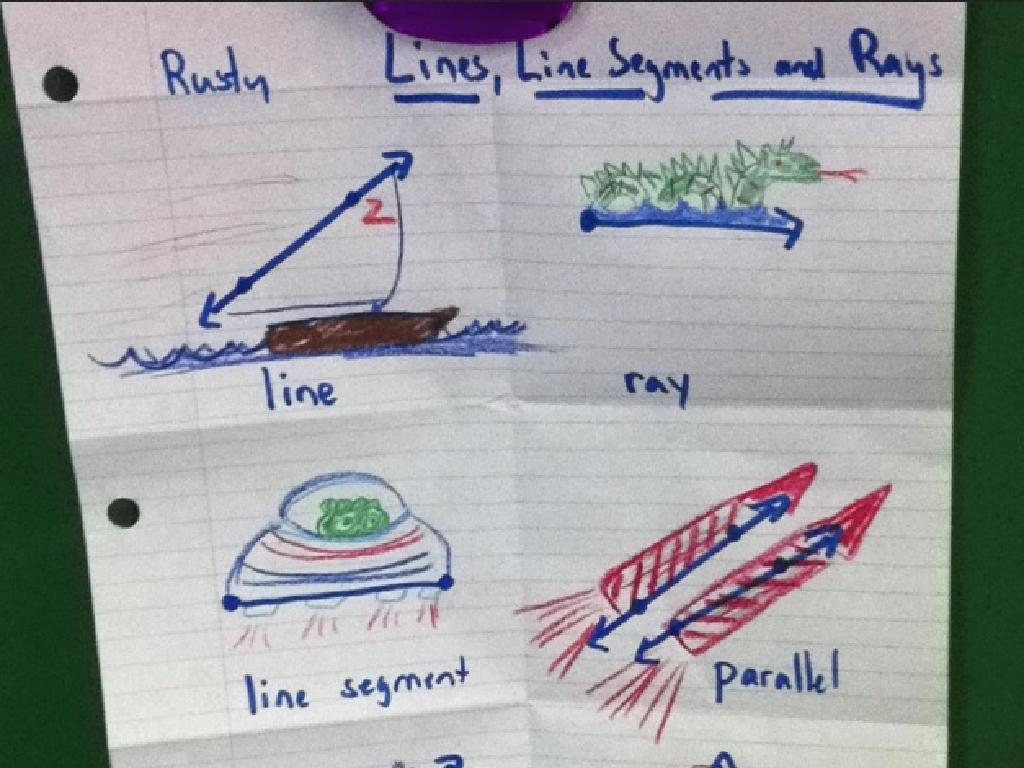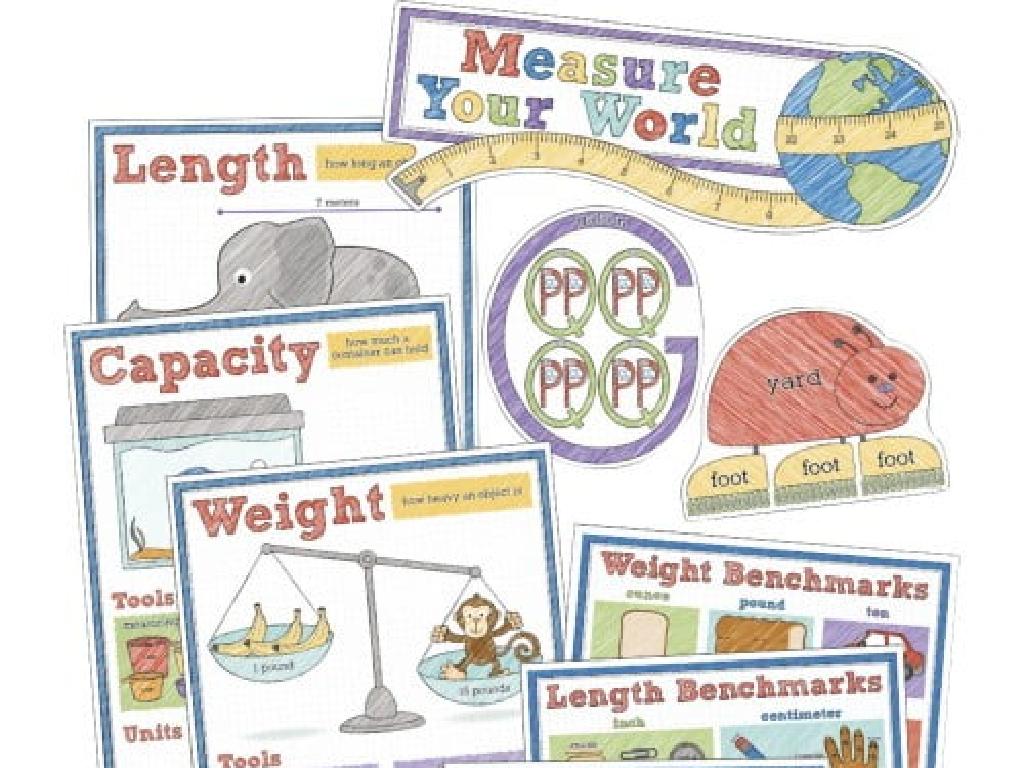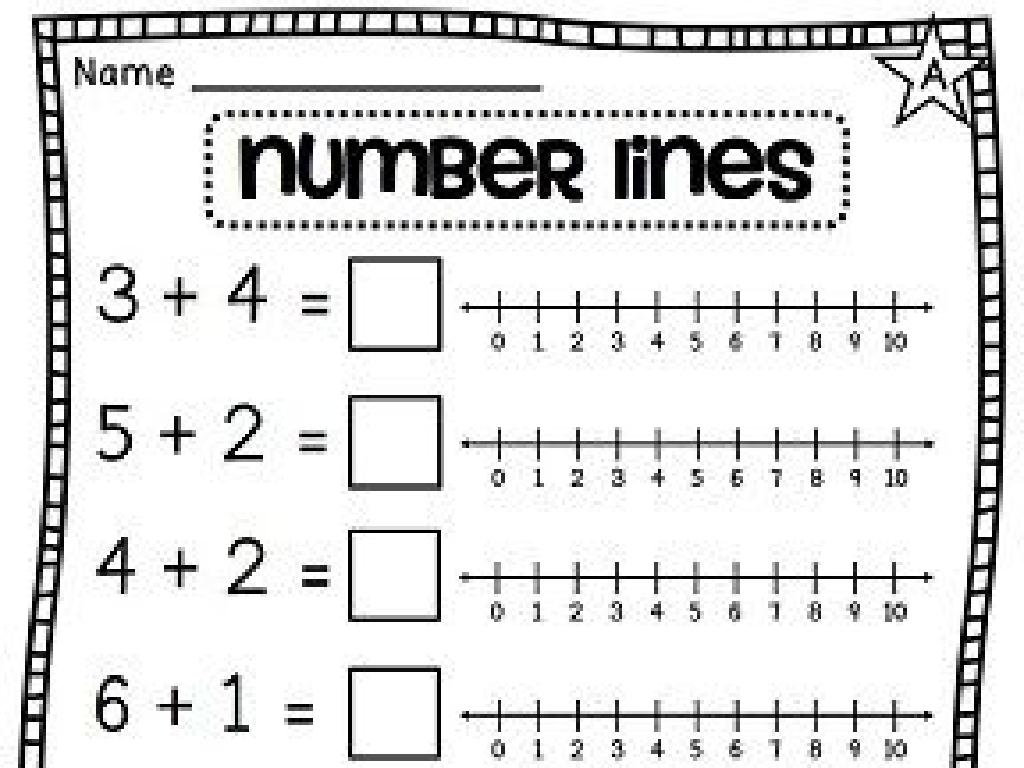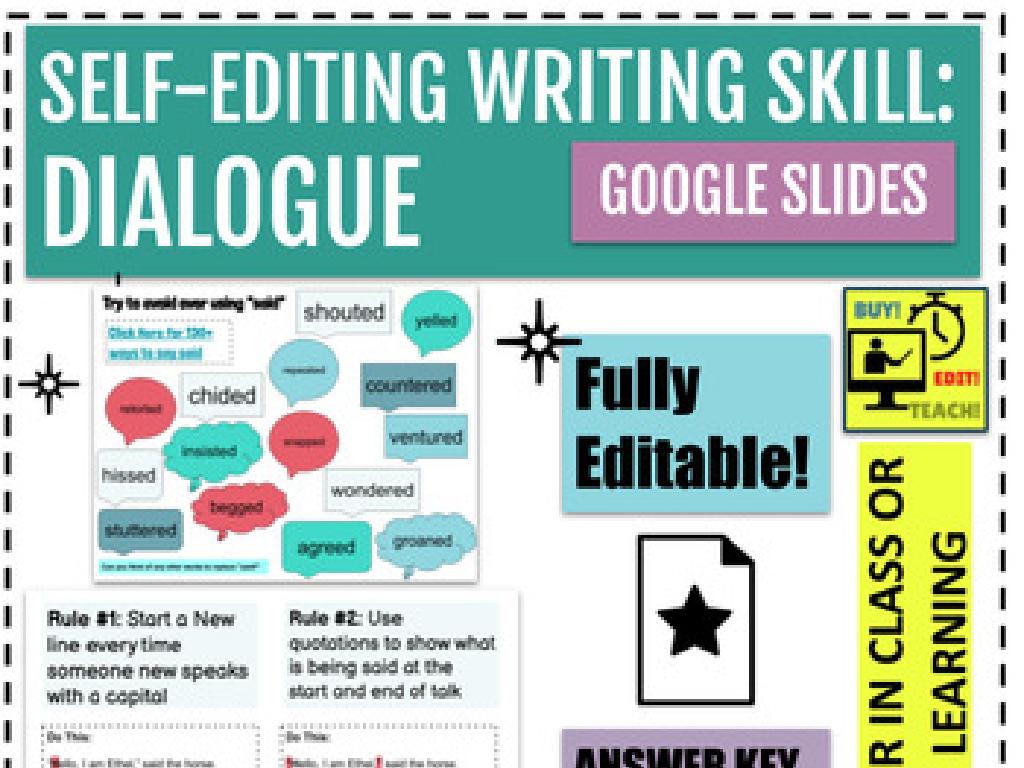Show Numbers With Cubes - Up To 5
Subject: Math
Grade: Kindergarten
Topic: Counting To 5
Summary: Explore numbers 1 through 5 with this engaging Kindergarten math lesson using hands-on cube activities. Students learn to count, recognize numerals, and build towers, reinforcing number sense and one-to-one correspondence. Each number is introduced step-by-step with visual and physical aids, from holding cubes to forming patterns. Interactive games and real-life examples make counting fun while developing fine motor skills and foundational math concepts. Perfect for young learners beginning their numerical journey.
Please LOG IN to download the presentation. Access is available to registered users only.
View More Content
Welcome to Counting!
– Greet our little mathematicians
– Today’s focus: Learning numbers
– Counting to 5 together
– Practice counting: 1, 2, 3, 4, 5
– Using cubes to show numbers
– Each cube represents one number
|
This slide is designed to introduce Kindergarten students to the concept of numbers and counting up to 5. Start the lesson with a warm greeting to make the children feel comfortable and excited about math. Explain that the day’s lesson will be about understanding and learning numbers. Engage the students by counting to 5 as a group to make it interactive and fun. Introduce the use of cubes as a visual and tactile aid to represent numbers, which will help them grasp the concept of quantity. Encourage the children to use their cubes to count along and to visualize the numbers as they say them out loud. This hands-on activity will reinforce their counting skills and number recognition.
What Are Numbers?
– Numbers help us count
– Like 1 apple, 2 cookies, 3 cars…
– Numbers are used daily
– Exploring numbers 1 to 5
– We’ll see how 1, 2, 3, 4, 5 look
– Counting with cubes
– Use cubes to show each number
|
This slide introduces the concept of numbers to Kindergarten students, emphasizing their role in counting and everyday use. Start by explaining that numbers are symbols we use to tell how many of something we have, like one apple or two cookies. Highlight that we use numbers all the time, such as when we tell our age or count toys. Then, focus on the numbers 1 to 5, showing them visually and with physical cubes if possible. Encourage the children to count along with you using the cubes, which will help them understand the quantity each number represents. This tactile approach reinforces learning through hands-on experience.
Learning Number 1 with Cubes
– Understanding the number 1
– Number 1 means a single item
– One cube represents number 1
– Visualize 1 as a single cube
– Showing 1 with our fingers
– Hold up 1 finger to show ‘one’
|
This slide introduces the concept of the number 1 to Kindergarten students. It’s important to start with the very basics, ensuring that the children understand that the number 1 represents a single object or unit. Use a physical cube to demonstrate this concept and ask the children to show one finger to connect the idea of ‘one’ with something they can do themselves. This tactile approach helps solidify the concept in their minds. Encourage the children to find one of various items in the classroom to further illustrate the point. The goal is for students to be able to recognize and represent the number 1 in multiple ways.
Learning the Number 2 with Cubes
– This is the number 2
– It represents two items
– Like two apples, two toys
– Counting two cubes
– Let’s count: 1 cube, plus 1 more cube makes 2
– Practice with cubes
– Try counting two blocks or two crayons
|
This slide introduces the concept of the number 2 to Kindergarten students using visual aids like cubes. Start by showing the numeral ‘2’ and explaining that it stands for two objects. Use real-life examples like two apples or two toys to illustrate the point. Then, with cubes or other countable items, demonstrate counting up to two, emphasizing the addition of one item to another to reach the total of two. Encourage the students to practice with their own sets of cubes or similar objects to reinforce the concept. The activity should be interactive, allowing the students to physically manipulate the cubes as they count. This hands-on experience helps solidify their understanding of the number 2 and its representation.
Learning Number 3 with Cubes
– Here is the number 3
– It represents three items
– Like three apples, toys, or fingers
– Counting three cubes together
– Let’s count: 1 cube, 2 cubes, 3 cubes!
– Practice with real cubes
– Use blocks or cubes to count physically
|
This slide introduces the concept of the number 3 to Kindergarten students using visual and tangible aids like cubes. Start by showing the numeral and then connect it to the idea that it represents a quantity of three items. Use real-life examples that the children can relate to, such as fruits or toys. Engage the students in a counting activity using three physical cubes, encouraging them to touch and count each one. This tactile experience reinforces their understanding of the number. In the classroom, provide sets of three cubes for each student to practice counting. This hands-on activity not only helps in recognizing the number but also in understanding the concept of quantity.
Learning the Number 4 with Cubes
– This is the number 4
– Four means four items
– Like 4 apples, 4 toys, or 4 blocks
– Make a square with cubes
– Use 4 cubes to form a square shape
– Counting cubes together
– We’ll count each cube as we place them
|
This slide introduces the concept of the number 4 to Kindergarten students using tangible objects like cubes. Start by showing the numeral 4 and explaining that it represents four items. Use examples that children can relate to, such as four apples or four toys. Then, engage the students in a hands-on activity where they make a square using four cubes, which helps them visualize the number and understand the concept of counting. As you guide them through placing each cube to form a square, encourage them to count aloud together. This reinforces number recognition and counting skills in a fun and interactive way.
Learning Number 5 with Cubes
– This is the number 5
– It represents five items
– Like five apples, or five stars
– Counting to 5 with cubes
– Place 5 cubes in a row and count
– Practice counting together
– Let’s count: 1, 2, 3, 4, 5!
|
This slide introduces the concept of the number 5 to Kindergarten students using visual aids like cubes. Start by showing the numeral 5 and explaining that it stands for five objects. Use real-life examples that the children can relate to, such as five fingers on a hand. Then, demonstrate counting to 5 by lining up cubes and touching each one as you count aloud. Encourage the children to do the same with their own set of cubes. This hands-on activity helps solidify their understanding of the quantity that the number 5 represents. Finish by counting together as a class to reinforce the lesson.
Counting Cubes Together
– Let’s count cubes from 1 to 5
– Each cube represents one number
– One cube is 1, two cubes are 2, and so on
– Counting helps us understand numbers
– Counting cubes makes it easy to see how numbers grow
– Practice counting with real cubes
– Use blocks or toy cubes to count in class
|
This slide is designed to engage Kindergarten students in a hands-on counting activity using cubes. Start by showing them a single cube and explaining that it represents the number 1. Then, add cubes one by one, counting aloud until you reach 5. Make sure to emphasize that each cube adds one more to the total count. Encourage the students to participate by counting along and using their fingers to represent each number. For the activity, provide each student with a set of cubes and ask them to count out loud as they add each cube. This will help them visualize the concept of counting and understand the sequence of numbers up to 5. The goal is to reinforce number recognition and one-to-one correspondence in a fun and interactive way.
Let’s Practice Counting with Cubes!
– Show number 1 using a cube
– Use cubes to make number 2
– Can you show number 3 with cubes?
– Try making number 4 with cubes
– Let’s see number 5 in cubes
|
This slide is an interactive activity for Kindergarten students to practice counting using physical cubes. Encourage the children to pick up one cube at a time and count out loud as they place each cube to represent the numbers 1 through 5. This hands-on activity helps them visualize the concept of quantity and number sequence. Be ready to assist any student who needs help and offer positive reinforcement as they successfully show each number with their cubes. You can also introduce the concept of addition by showing how adding one more cube increases the number by one. Prepare to have enough cubes for all students and ensure that each child has a turn to demonstrate their counting skills.
Class Activity: Building Towers with Cubes
– Build a tower using 5 cubes
– Count each cube out loud
– Aim for the tallest stable tower
– Observe whose tower stands tall
|
This activity is designed to help Kindergarten students practice counting to 5 in a fun and interactive way. Provide each student with 5 cubes and instruct them to stack one cube at a time, counting each one as they go. This will reinforce number recognition and one-to-one correspondence. Challenge the students to build the tallest tower they can without it falling over, which will also engage their fine motor skills and spatial awareness. As an extension, you can ask students to compare the heights of different towers and discuss why some towers might be more stable than others. Possible variations of the activity could include using different colored cubes for each number, building towers with a partner, or even incorporating patterns into the tower building.
Great Job Counting!
– Excellent work with cube counting
– You can now count numbers up to 5
– Time for a big round of applause
– Clap your hands together to celebrate
– Celebrate your counting success
|
This slide is a celebration of the students’ achievement in learning to count up to 5 using cubes. It’s important to acknowledge their effort and success to build their confidence and encourage a love for learning math. The slide prompts them to give themselves a round of applause, reinforcing positive reinforcement and making the learning experience enjoyable. As a teacher, you can lead the applause and perhaps even incorporate a fun clapping song or rhythm to make the moment memorable. Additionally, consider displaying the cubes visually and counting together one more time to reinforce the concept.

